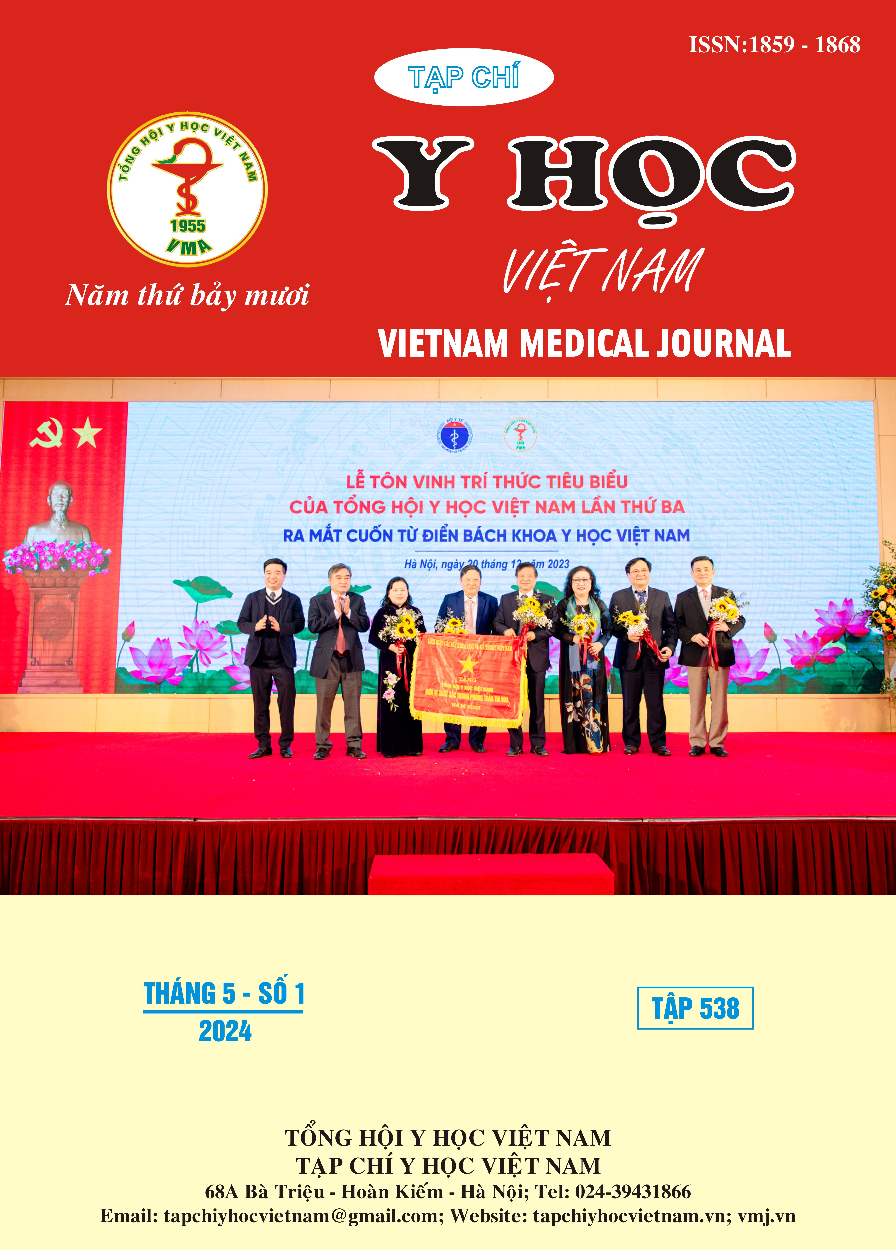CLINICAL, SUBCLINICAL CHARACTERISTICS AND RESULTS OF TREATMENT OF PATIENTS WITH VENTILATION-RELATED PNEUMONIA IN THE INTENSIVE CARE UNIT AT NGHE AN GENERAL HOSPITAL
Main Article Content
Abstract
Objective: to describe of clinical, laboratory and result of treatment of ventilation - acquired pneumoniae patient (VAP) at the Intensive Care Unit of Nghe An General Friendship Hospital. Subjects and methods: Cross - sectional descriptive study on 84 VAP patients treated at the Intensive Care Unit of Nghe An General Friendship Hospital from October 2022 to November 2023. Result: Rate of VAP was 9.2%, incidence was 20.3/1000 ventilated days. The largest age group was ≥ 60 years (66.7%). Majority was male with 71.4%. The most common disease on ICU admission was cerebral hemorrhage with a rate of 61.9%. The most common medical history was hypertension with a rate of 50% The most common indication for intubation was coma with a rate of 82.1%. Majority of patient in study had fever (70.2%), change in sputum properties (71.4%), leukocytosis (78.6%). The average VAP occurrence was 4.8±1.8 days, the average duration of ventilation was 7.3±2.2 days, the average duration in ICU stay was 9.3±2.4 days, the average duration of hospital stay was 11.9±5.9 days. The postitive bacterial culture was seen in 70.2% patients, more common in with the late VAP than that in early VAP (82.9% versus 61.2%), 15.5% patient had 2 types of bacteria in the same culture sample. Gram-negative bacteria are the most common with a rate of 80.6%. The most common bacteria that cause VAP was Klebsiella pneumoniae with a rate of 23.6%, next was Acinetobacter baumannii with a rate of 20.8%, Pseudomonas aeruginosa with a rate of 20.8%, Staphylococcus aureus with a rate of 18.1%. The most common type of bacteria that caused early VAP were Klebsiella pneumoniae and Staphylococcus aureus. The most common type of bacteria that caused late VAP were Pseudomonas aeruginosa and Acinetobacter baumannii. Treatment was better (transferred to another department, dischaged, referred to low level hospital): 59.5%, and worse (dead, home discharged, referred to higher level hospital): 40.5%.
Article Details
Keywords
Ventilation - acquired pneumoniae, Nghe An General friendship Hospital.
References
2. MelsenWG, RoversMM, GroenwoldRH, et al. Attributable mortality of ventilator-associated pneumonia: ameta-analysis of individual patient data from randomised prevention studies. Lancet Infect Dis. 2013; 13(8):665-71.
3. MuscedereJG, DayA, HeylandDK. Mortality, attributable mortality, and clinical events as end points for clinical trials of ventilator- associated pneumonia and hospital- acquired pneumonia. ClinInfect Dis. 2010;51, Suppl1:S120-5.
4. Giang Thục Anh. Đánh giá sử dụng kháng sinh điều trị nhiễm khuẩn bệnh viện tại khoa Điều trị tích cực, Bệnh viện Bạch Mai năm 2003-2004. Luận văn bác sĩ nội trú. Trường Đại học Y Hà Nội. 2004
5. Coffin SE, KlompasM, Classen D, Arias KM, et al. Strategies To Prevent Ventilator-associated pneumonia inacute carehospitals. Infection Control and Hospital Epidemiology. 2008;29, Suppl1:S31.
6. Hoàng Khánh Linh. Mô tả đặc điểm lâm sàng, cận lâm sàng và các yếu tố nguy cơ ở bệnh nhân viêm phổi liên quan thở máy tại khoa Hồi sức tích cực bệnh viện Bạch Mai giai đoạn 2017-2018. Luận văn tốt nghiệp bác sĩ chuyên khoa cấp 2. Trường Đại học Y Hà Nội. 2018.
7. Hà Sơn Bình. Nhận xét một số yếu tố liên quan và hiệu quả điều trị ở bệnh nhân viêm phổi liên quan đến thở máy. Luận văn tốt nghiệp bác sĩ chuyên khoa cấp 2. Trường Đại học Y Hà Nội. 2015
8. Nguyễn Ngọc Quang, Đoàn Thị Mai Phương, Lê Thị Diễm Tuyết và cộng sự. Tình hình viêm phổi liên quan đến thở máy tại khoa Hồi sức tích cực bệnh viện Bạch Mai. Nội khoa Việt Nam. May 2012:57-62.


